August 2013. We left the rambling, hacienda-like Hotel Gualiqueme in the dark at 5:15 AM, and crossed the long suspension bridge over the Río Choluteca, heading east toward the border with Nicaragua. But we soon turned north, passing through the little town of Santa Ana de Yusguare. The pavement ended as dawn silhouetted the hills ahead. Victor’s old Kia stationwagon clunked and complained as the road became steep and rocky, but it hauled us slowly up until we came to a wide bend in the road with a few buildings, where even at that hour a small group of people were waiting for the bus. People call this place “Los Tubos,” because of the water pipes emerging from the small valley here. It is perched on the side of Cerro Guanacaure, a 3,100-foot peak in the range of hills to the east and north of the city of Choleteca, the capital of Choluteca Department, in southern Honduras. Cerro Guanacaure is a multiple-use protected area of about 2,000 hectares, whose watersheds supply at least 30% of domestic water for the city below.
We drank some coffee from a pink plastic Chinese thermos while the morning brightened, ate some bananas, and spotted a few birds around the car before following a rough trail beside the “tubos” that headed up the valley into the forest. In about ten minutes we came to a concrete dam across a small clear stream, which created a small reservoir that fed water into the pipes. Rafael, a local campesino and a member of the municipal environmental committee, caught up with us here. He was supposed to meet us where we parked, but the bus was late, so we started walking without him, knowing he would catch up.
Rafael is a self-appointed guard of Cerro Guanacaure, although he doesn’t get paid for it, he said. He knows the trails well, and from walking them at all seasons he has become the local go-to bird expert, especially for finding the rarest bird here, the long-tailed manakin.
Along with Rafael and Victor, who in his retirement years is trying to establish the first credible ecotourism venture in southern Honduras, we were accompanied by a young university student, Mayron, who became fascinated by birds when he was a boy. He is now an extremely skilled and knowledgeable birding guide, having assisted some of the best ornithologists in Honduras with their research.
The forest here was moist and lush, even though this was supposed to be a dry forest zone and the main rainy season was just starting. Huge trees reached octopus-like branches skyward.
Just as we came to the first place where Rafael had seen the long-tailed manakins, Mayron heard an elegant trogon calling: “oink, oink, oink, oink, oink, oink!” He pulled a small MP3 player out of his knapsack, and on its loudspeaker function played the trogon’s song back from a database of bird songs. The elegant trogon responded, moving closer to check out his fake digital rival, calling a territorial challenge. Soon we spotted him: a beautiful male in the sun on high branch, with that stunning strawberry breast set off by a snowy stripe from his green-black head.
The trogon was soon followed by the appearance of a turquoise-browed motmot, blue-tailed hummingbird, squirrel cuckoo, streak-headed woodcreeper, and barred ant-shrike. We were thoroughly distracted by this bird show, until Mayron’s birdsong-tuned ear heard a long-tailed manakin calling. We focused again on our quest for this rare bird. Another MP3 recording lured in the long-tailed singer. Looking nearly straight up, we stalked to get a clear view, struggling to focus on the almost silhoutted bird. Finally, there it was, the two wiry tail feathers that give this species its name emerging from a squat dark body.
The long-tailed manakin ranges from Mexico to Costa Rica in tropical dry forests, which typically occur on the Pacific slopes of the region. In Honduras, dry forests are not common. They are the most fragmented ecosystems of the country, as well as the least represented in the national system of protected areas. Cerro Guanacaure, which protects a remnant of dry forest, is the only place in Honduras where this species has been seen. Long-tailed manakin males court females in dancing displays in which two or three males dance and sing together, a kind of courtship behavior biologists call “lekking.” Rafael said he had seen and heard males at leks in four places along the trail we were walking today.
After a few clear glimpses of this rarest of birds, we wandered on up the valley, enjoying the slow pace of the green morning, with no further expectations. Evidence of long human use of this mountain forest was everywhere: rubber trees with long lines of tapping scars; old coffee bushes; and old bananas where some forest farm had been. More birds distracted us at every turn: blue-crowned motmot, white-throated magpie jay, white-tipped dove, clay-colored robin, rufous-capped warbler, tropical pewee, rose-throated becard. All of them were new to me; my “life list” was growing quickly. Finally we came to a bend in the trail where we could see the peak of Cerro Guanacaure, rising steeply above us. The day was getting hotter now. It was 10:30 AM, and we decided to head back down.
I haven’t yet described the context of this early morning expedition. So far it probably sounds like a birdwatching junket. Why was I here, so early? Working? Yes, this was work. This visit to Cerro Guanacaure was part of a climate change vulnerability assessment requested by the USAID Mission in Honduras, through a contract to the USAID African and Latin American Resilience to Climate Change (ARCC) Project. The assessment will emphasize the role of biodiversity conservation and ecosystem services in sustainable development and societal resilience to climate change. Walking in the mountain watershed forest and looking at birds, we were getting an impression of the complex connections and interdependencies we were going to be studying in the months ahead.
There is an emerging field called “ecohydrology.” Ecologists have long called the water cycle a “biogeochemical” cycle, implying that living things influence the physical and chemical cyling of water. But it is become more and more clear – it is not just clouds and rain and rocks and soil. There are also leaves, roots, water-harvesting and retaining structures of plants, evapotranspiration, leaf surfaces for condensation, leaf litter and humus. The water cycle is alive, and depends on the biodiversity of the place. Recent Ph.D. thesis research done in Honduras, not far from here, showed that the cloud-forested watershed coming from La Tigra National Park above Tegucigalpa produces four times as much water as other nearby watersheds where the natural forest biodiversity has been degraded or converted to agriculture. The water cycle is alive. But in many places, including some of the slopes of Cerro Guanacaure, the natural forest is being cleared or degraded. And climate change, including the prospects of increased temperatures and reduced rainfall, may well add insult to injury here.
After making our way slowly down through the forest to Victor’s car, we went to another “quebrada” up the road, where more “tubos” harvested water from another micro-watershed of the mountain. But it was after noon, the day was getting hot, the sun intense, and the birds were taking their siestas. It was time for lunch. We drove even further up and around the side of the mountain to the community of La Fortuna. Sitting on the shaded terrace of a local restaurant we ate a typical Sunday meal, “sopa de costillas de res”: beef rib soup, a rich broth with meaty rib bones, starchy plantains, yuca, and green peppers, and a big plate of tortillas on the side. Then came a strong, sugary cup of Honduran coffee, followed by a refreshing glass of locally-grown starfruit blended with water, sugar, and ice.
Across the road from the restaurant, a concrete tank held a supply of precious water, and a sign declared that this micro-watershed was protected. “El agua es el recurso más valioso para la vida del hombre,” declared the sign in front of the water reservoir: “water is the most valuable resource for people’s lives.”
I couldn’t help but muse on our morning. Water and forests; forests and birds; birds and water; water and people; people and birds; forests and people. Is that all the permutations, all the interconnections? I thought of the statement I had read on another sign, at the regional headquarters of the national environmental agency, SERNA, down in Choluteca: “Somos parte de la tierra no sus duenos; somos parte de un gran equilibrio.” It was an ecological vision, worthy of Alexander von Humboldt, John Muir, Aldo Leopold, or Ed Ricketts: “We are part of the Earth, not its masters; we are part of a grand equilibrium.”
I don’t think I’ve ever felt this more strongly than today, a Sunday on Cerro Guanacaure.
See More Photos
Related Links:

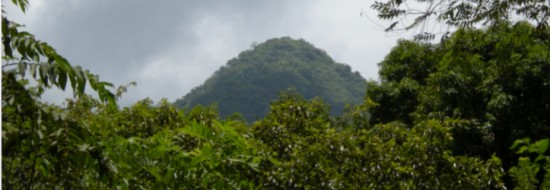
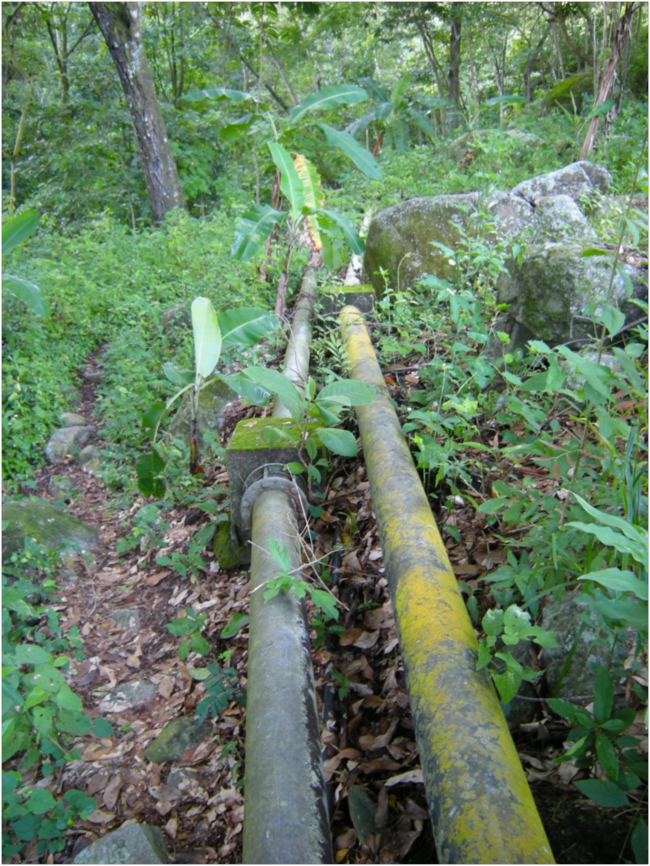
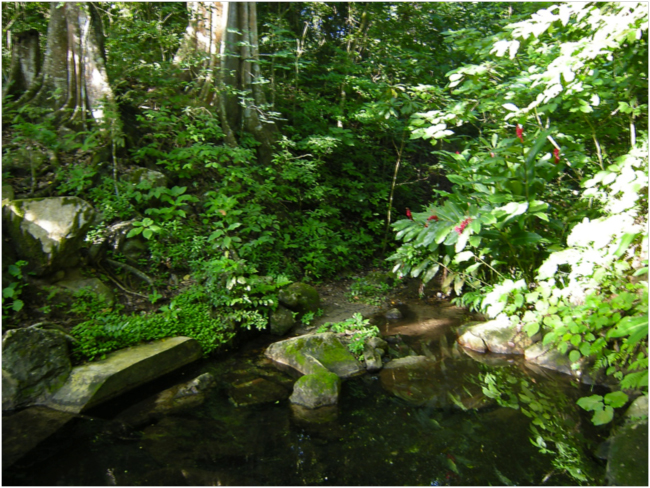
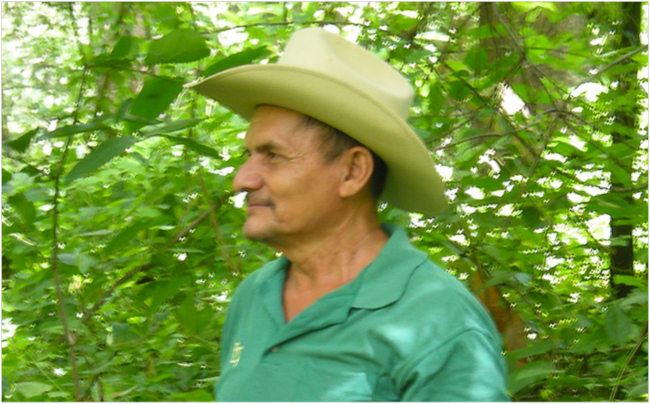
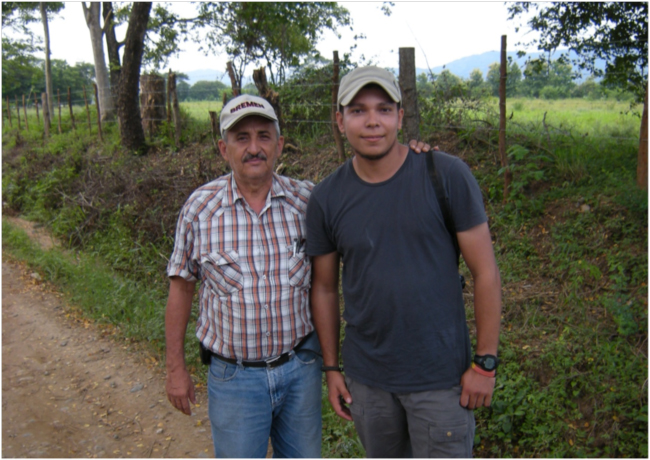
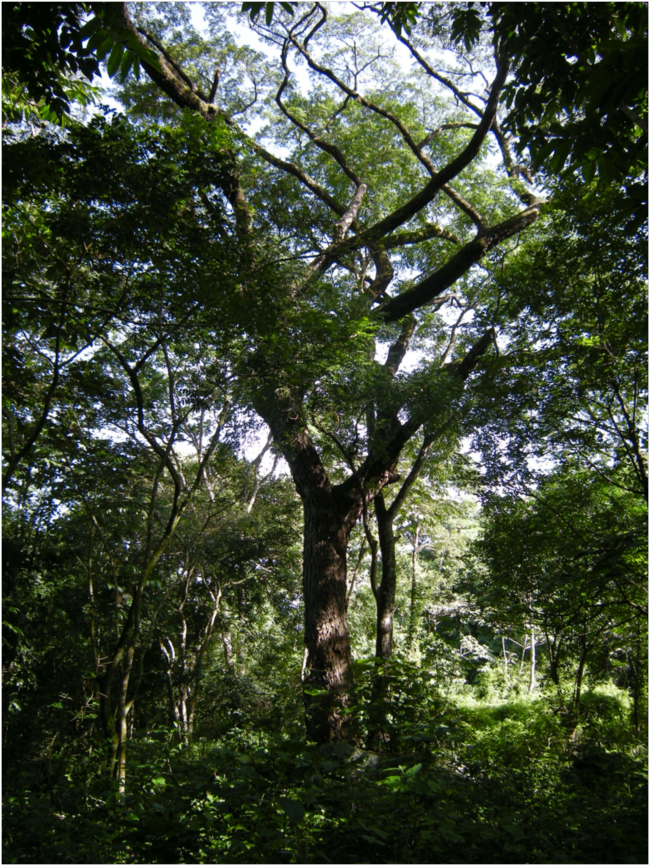
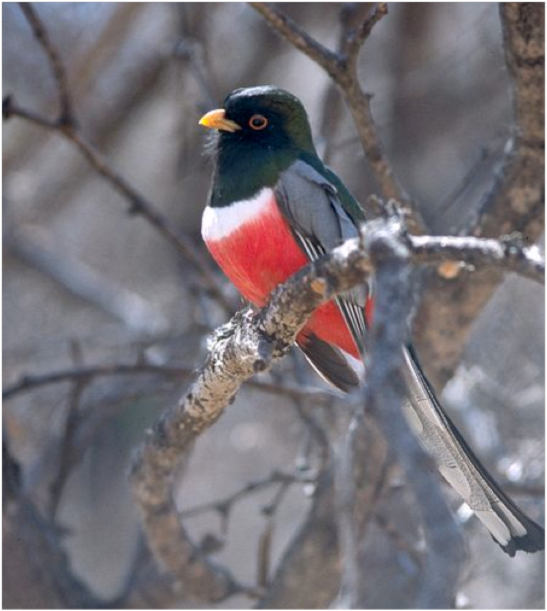
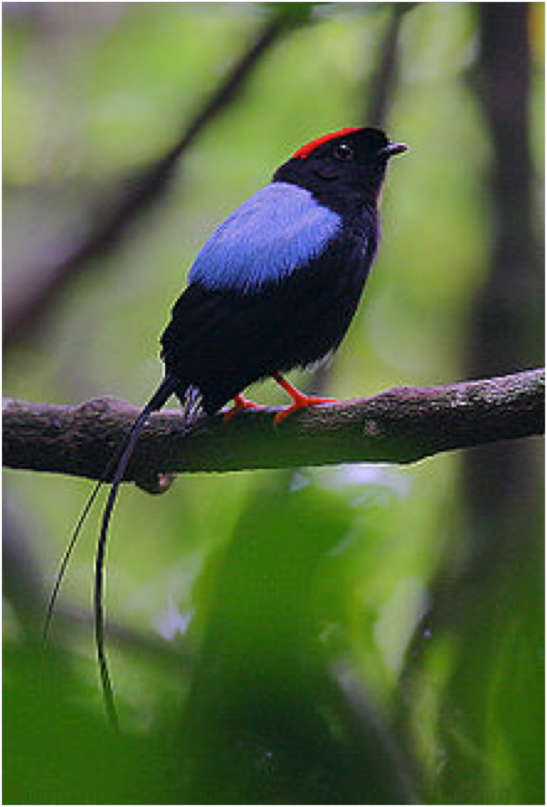
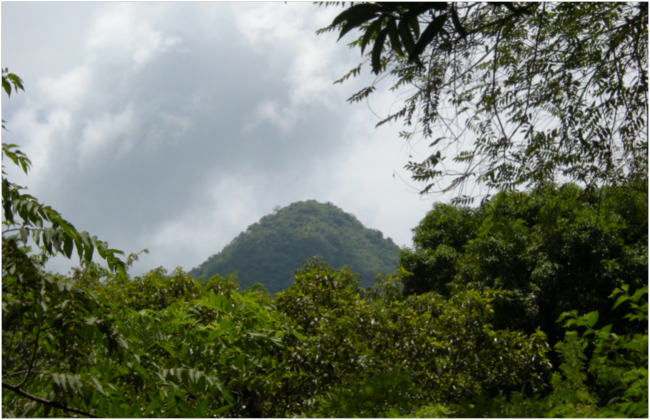
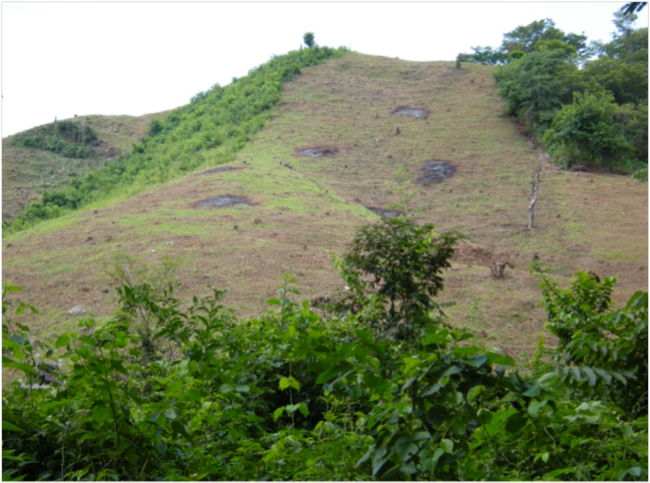
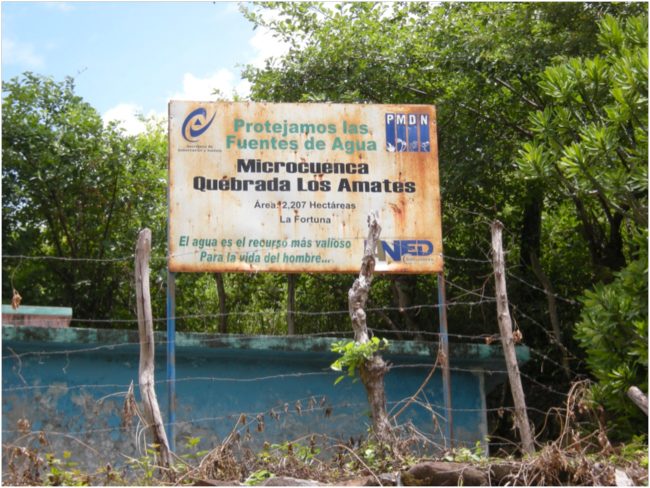
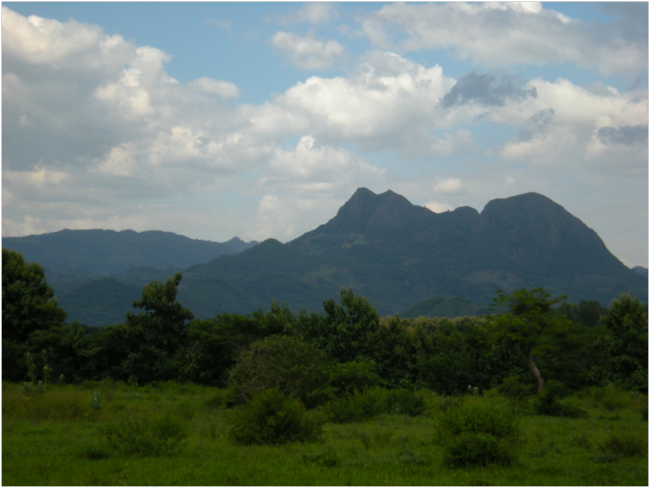



September 4, 2013 6:47 pm
Enjoyed it, Bruce. Given the terrible mudslides that Honduran villagers have experienced, and the cost to life and property, one would figure that they’d be getting more knowledgeable about the costs of deforestation.
Take care,
Rich
September 11, 2013 11:58 pm
Bruce, muy interesante tu reporte sobre la gira al Cerro Guanacaure, es un lugar interesante no solamente para disfrutarlo como paseo sino un verdadero laboratorio de campo que con un visita rápida te puede mostrar muchas cosas interesantes. Hay muchos estudios y acciones que se han ejecutado en esta Área Protegida de Uso Múltiple, por ser una de las zonas productoras de agua mas importante en la Región Sur de Honduras, ya que abastece de agua potable en un porcentaje significativo a las cabeceras municipales de Santa Ana de Yusguare, Choluteca y Namasigue y muchas comunidades de estos municipios. Bueno….. hay mucho que hablar de este monumento sureño; que si Dios lo permite continuaremos intercambiando información al respecto. Te felicito excelente resumen, quien lo lea le da la impresión que lo escribió alguien que tiene mucho tiempo de vivir o conocer esta zona.
September 12, 2013 12:38 am
Mil gracias, Olman,
Por sus pensamientos. Ojalá vamos a visitar la zona conjunto pronto y continuar este diálogo.
Bruce
September 20, 2013 8:46 pm
Bruce,
I really enjoyed this article. To me it was like visiting this place once again after so many years. Your ability to describe the enviroment and to relate the dynamics of the ecosystems helped me to understand that we still need to increase our efforts to diminish degradation of these áreas. I have also had the chance to get to know a bit about the climate change vulnerability assessment you are going to conduct – and in which, I hope – i will be involved. I am sure this is going to be an excellent chance to learn a lot about new approaches to better understand about the emerging field called ecohydrology.
I also had the chance thruogh this article (blog) to salute my old good friend Olman with whom we used to work in USAID-MIRA Project and before that in so many others iniciatives such as PROARCA Costa y APM. Saludos Olman !!!
March 17, 2015 8:21 am
Hi Bruce,
I’m a Canadian who married a beautiful girl from Choluteca. Having grown up in Uganda – a birder’s paradise – I fell in love with nature, and birds in particular. I would love to organize a bird walk on my next trip to Choluteca, which is happening this summer (2015). I would be grateful if you would be able to point me in the right direction towards Victor and/or Mayron. My spanish is not great, but my wife’s is.
Thanks for this post. You managed to capture some great photographs to compliment your beautiful words.